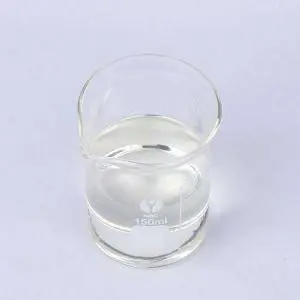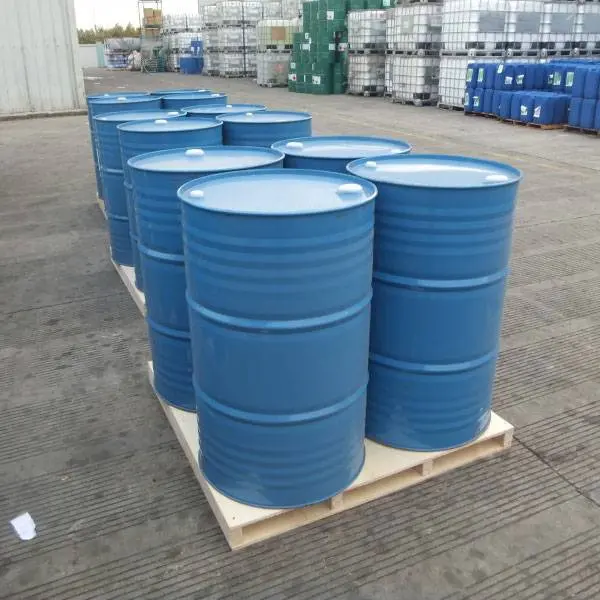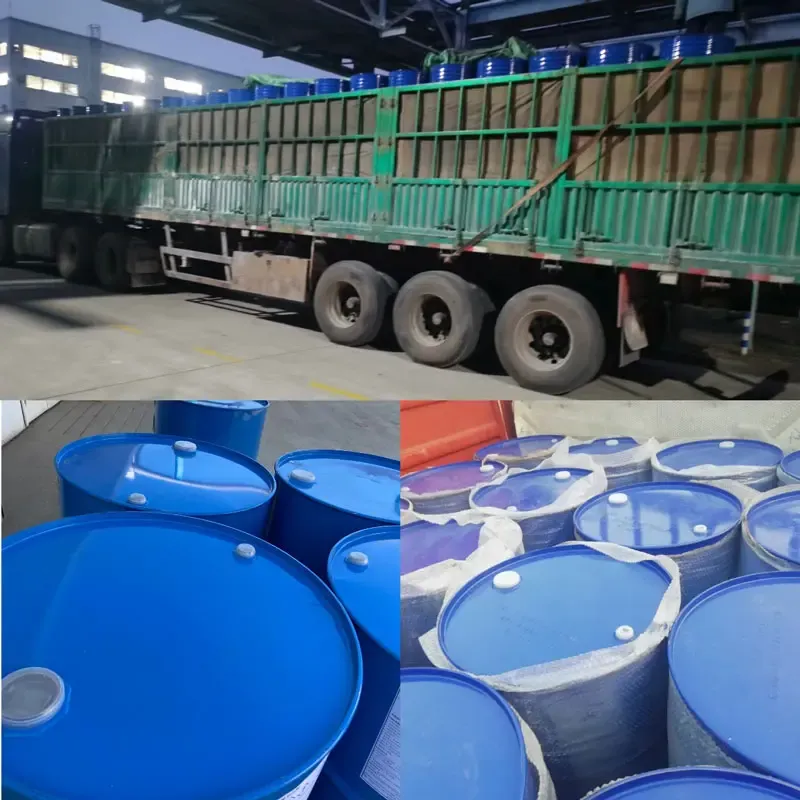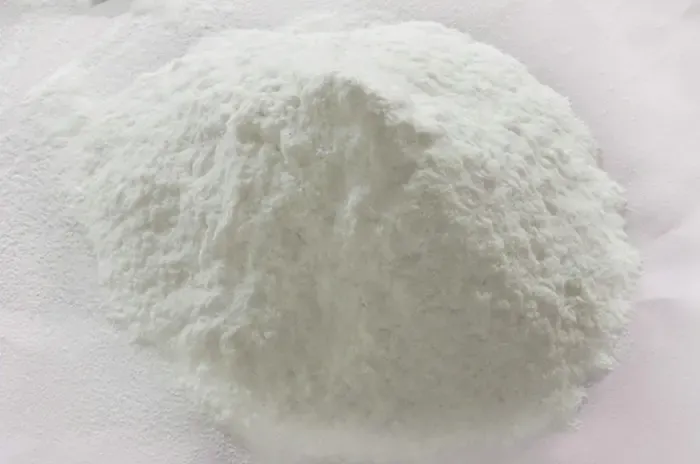Hexamethylphosphoric Triamide: High-Purity Solvent & Reagent
Understanding Hexamethylphosphoric Triamide: A B2B Essential
In the intricate landscape of chemical synthesis and industrial applications, certain compounds stand out for their indispensable properties. One such compound is Hexamethylphosphoric Triamide (HMPA), a highly polar aprotic solvent with unique characteristics that make it invaluable across a multitude of high-tech and specialized sectors. Known for its exceptional ability to dissolve a wide range of organic and inorganic compounds, HMPA plays a critical role in facilitating reactions that are otherwise difficult or impossible in conventional solvents. Its robust chemical stability and versatile solvating power are pivotal for advanced materials, pharmaceuticals, and specialized industrial processes.
This article delves into the technical aspects, application nuances, and market dynamics surrounding Hexamethylphosphoric Triamide, providing B2B decision-makers and technical engineers with a comprehensive overview of its strategic importance and operational advantages.
Current Industry Trends and Market Outlook
The market for Hexamethylphosphoric Triamide is shaped by evolving demands in key industries. While environmental and health regulations have prompted a search for alternatives in some applications, its unique performance profile ensures its continued prominence in specific, high-value niches where no direct substitute offers equivalent efficiency.
- Pharmaceutical Synthesis: HMPA remains critical in many complex organic reactions for drug discovery and manufacturing, especially for highly selective transformations where its strong Lewis basicity and high solvating power are indispensable. The global pharmaceutical market's steady growth continues to fuel demand for specialty solvents like Hexamethylphosphoric Triamide.
- Advanced Materials: In the development of high-performance polymers, specialized resins, and advanced electrolytes (e.g., for lithium-ion batteries), HMPA's ability to dissolve challenging precursors and stabilize reactive intermediates is highly valued.
- Catalysis and Ligand Chemistry: Its use as a ligand in various metal-catalyzed reactions, enhancing reaction rates and selectivities, is a growing area. Innovations in homogeneous catalysis continue to present new opportunities for specialized solvents.
- Regulatory Landscape: Manufacturers are increasingly focused on stringent quality control and compliance with international standards (e.g., REACH, RoHS) to ensure safe handling and application, necessitating high-purity grades of Hexamethylphosphoric Triamide.
Recent market analysis indicates a stable demand in these specialized segments, with a CAGR (Compound Annual Growth Rate) of approximately 3-5% over the next five years for high-purity, application-specific grades. This growth is primarily driven by innovation in medicinal chemistry and materials science, where the unique properties of HMPA cannot be easily replicated by other solvents.
Manufacturing Process of Hexamethylphosphoric Triamide
The synthesis of Hexamethylphosphoric Triamide involves a controlled multi-step chemical process, typically starting from phosphoryl chloride (POCl₃) and dimethylamine ((CH₃)₂NH). The process demands precise control over reaction conditions to ensure high purity and yield, crucial for its demanding industrial applications.
Process Flow:
-
Raw Material Procurement & Pre-treatment:
High-purity phosphoryl chloride (POCl₃) and anhydrous dimethylamine are sourced. These materials undergo quality control checks for impurities that could affect the final product's performance or introduce unwanted side reactions.
-
Reaction (Amination):
Dimethylamine is slowly added to phosphoryl chloride, typically in a reaction vessel equipped with a cooling system to manage the exothermic reaction. The reaction is carefully controlled to prevent the formation of by-products. The general reaction is: POCl₃ + 6(CH₃)₂NH → [(CH₃)₂N]₃PO + 3(CH₃)₂NH·HCl.
-
Neutralization & Filtration:
The reaction mixture contains the desired HMPA and dimethylamine hydrochloride salt. A base (e.g., sodium hydroxide) is added to neutralize the hydrochloride salt, which is then removed by filtration, leaving crude HMPA.
-
Purification (Distillation):
The crude HMPA undergoes vacuum distillation. This critical step separates HMPA from unreacted raw materials, residual solvents, and other impurities, yielding a highly purified product. Multiple distillation passes may be employed to achieve ultra-high purity grades required for sensitive applications.
-
Quality Control & Packaging:
The final product is subjected to rigorous quality testing against international standards such as ISO 9001:2015 for quality management and specific application-based purity criteria. Key parameters like purity (GC-MS), moisture content (Karl Fischer), and color are checked. Products are then packaged in inert, sealed container111s to prevent degradation.
This manufacturing process emphasizes material selection, precise process control (e.g., temperature, pressure, reaction stoichiometry), and stringent testing standards to ensure the production of high-quality Hexamethylphosphoric Triamide. The typical service life of HMPA in a sealed container111, stored under optimal conditions, can exceed 24 months, making it a reliable component for industrial inventory.
Target Industries & Advantages:
- Petrochemical: Used as a selective solvent in gas purification processes, enhancing energy saving through efficient separation. Its thermal stability prevents degradation in high-temperature environments.
- Metallurgy: Employed in certain specialized electroplating baths or surface treatment solutions, offering corrosion resistance to the final products due to its unique solvation properties.
- Pharmaceuticals: Indispensable for a wide array of organic reactions, including SN2 reactions, Grignard reactions, and lithium reagent chemistry, enabling higher yields and selectivities that translate to more energy-efficient syntheses and reduced waste.
- Water Supply & Drainage (Specialized Treatment): While not a primary application, in highly specific industrial water treatment scenarios involving complex metal ion sequestration, HMPA can play a role due to its strong chelating ability, contributing to advanced purification and minimizing equipment corrosion.

Technical Specifications and Parameters
The performance of Hexamethylphosphoric Triamide in various applications is directly attributable to its well-defined physical and chemical properties. These specifications are crucial for engineers and chemists in selecting the appropriate grade for their processes.
Product Specification Table: Hexamethylphosphoric Triamide (HMPA)
These parameters ensure the consistent quality and performance expected in sensitive industrial and research applications. Our commitment to ISO-certified manufacturing processes guarantees adherence to these rigorous specifications.
Diverse Application Scenarios of Hexamethylphosphoric Triamide
The unique combination of high polarity, aprotic nature, and excellent solvating capabilities makes Hexamethylphosphoric Triamide indispensable in a variety of specialized chemical processes.
Key Application Areas:
- Organic Synthesis Solvent: HMPA is widely utilized as a solvent for a broad range of organic reactions, particularly those involving carbanions, organometallic reagents (e.g., Grignard reagents, organolithium compounds), and nucleophilic substitutions (SN2 reactions). It enhances reaction rates and yields by effectively solvating cations and leaving anions "bare" and highly reactive.
- Polymerization Processes: In the synthesis of specific high-performance polymers, Hexamethylphosphoric Triamide serves as an excellent solvent for difficult-to-dissolve monomers or polymers, enabling controlled polymerization kinetics and producing materials with desired molecular weights and distributions.
- Electrochemistry: Its high dielectric constant and ability to dissolve various salts make it a solvent of choice in certain electrochemical applications, including specialized battery electrolytes or electrochemical synthesis setups.
- Catalyst and Ligand: Beyond its role as a solvent, HMPA can act as a ligand for transition metal catalysts, modifying their reactivity and selectivity in various homogeneous catalytic reactions. Its strong Lewis basicity allows it to coordinate effectively with metal centers.
- Pesticide Manufacturing: Historically used in the synthesis of certain active pharmaceutical ingredients (APIs) and specialty chemicals for agrochemical applications, where its unique solvating properties are critical for complex reaction pathways.
Technical Advantages of Hexamethylphosphoric Triamide
The robust chemical profile of Hexamethylphosphoric Triamide offers distinct technical advantages that are critical for achieving superior outcomes in demanding chemical processes.
- Exceptional Solvating Power: HMPA's high polarity and strong Lewis basicity enable it to dissolve a wide array of organic compounds, including polymers, and also enhance the solubility of many inorganic salts, making it a versatile solvent for challenging reaction media.
- Enhanced Reaction Kinetics: As an aprotic solvent, HMPA effectively solvates cations without interfering with the nucleophilicity of anions. This "naked anion" effect dramatically increases the reactivity of nucleophiles, leading to faster reaction rates and higher yields, especially in SN2 reactions.
- High Thermal and Chemical Stability: HMPA exhibits excellent stability across a broad temperature range and under various chemical conditions, allowing for its use in reactions requiring elevated temperatures without significant degradation. This stability contributes to process reliability and purity of the final product.
- Non-Protic Nature: Unlike protic solvents that can participate in reactions (e.g., protonating strong bases or nucleophiles), HMPA's aprotic character ensures that it acts purely as a solvent, maintaining the integrity and reactivity of sensitive reagents.
- Steric Hindrance for Selectivity: The bulky nature of its dimethylamino groups can sometimes impart steric hindrance, influencing reaction selectivity in complex organic transformations.
These advantages translate directly into operational benefits such as increased efficiency, reduced reaction times, and the ability to conduct highly specific chemical transformations critical for advanced material and pharmaceutical synthesis.

Vendor Comparison and Customized Solutions
When sourcing Hexamethylphosphoric Triamide, selecting a reliable vendor is paramount. Quality, consistency, and support can significantly impact project success and operational efficiency.
Key Vendor Comparison Criteria:
Customized Solutions:
Recognizing that every industrial application of Hexamethylphosphoric Triamide can have unique requirements, leading suppliers offer tailored solutions. These include:
- Variable Purity Grades: While a standard ≥99.5% purity is common, ultra-high purity grades (≥99.9%) might be available for highly sensitive pharmaceutical or semiconductor applications, achieved through enhanced distillation or purification steps.
- Specialized Packaging: From small laboratory-scale bottles to bulk ISO tanks, packaging can be customized to suit client consumption patterns and safety protocols, including options for inert gas blanketing.
- Formulation Adjustments: For specific reaction systems, minor co-solvent additions or stabilizers might be required. Expert vendors can work with clients to provide pre-formulated mixtures.
- Logistics and Supply Chain Management: Tailored delivery schedules, buffer stock arrangements, and global distribution networks ensure consistent and timely supply, minimizing downtime for clients.
Our team at Sincere Chemicals, with years of experience in specialty chemicals, is dedicated to understanding specific client needs and providing Hexamethylphosphoric Triamide solutions that optimize performance and cost-effectiveness.
Application Case Studies
Real-world applications demonstrate the tangible benefits of utilizing high-quality Hexamethylphosphoric Triamide in industrial processes.
Case Study 1: Enhanced Pharmaceutical Intermediate Synthesis
- Client: A leading pharmaceutical R&D firm.
- Challenge: Synthesizing a key chiral intermediate for an anti-cancer drug via an SN2 reaction. Conventional aprotic solvents resulted in low yields (65%) and significant by-product formation, requiring extensive purification.
- Solution: Our technical team recommended high-purity Hexamethylphosphoric Triamide as the reaction solvent. Its unique solvating properties effectively activated the nucleophile, while its aprotic nature minimized side reactions.
- Result: Reaction yield increased to 92%, with a substantial reduction in impurities. This led to a 30% reduction in overall processing time and a 15% decrease in manufacturing costs due to less purification effort and higher throughput. The client achieved accelerated market entry for their drug candidate.
Case Study 2: Polymerization for High-Performance Adhesives
- Client: A specialty chemicals manufacturer producing high-strength industrial adhesives.
- Challenge: Developing a new generation of adhesive polymers that required the dissolution and controlled polymerization of highly insoluble monomers. Standard solvents struggled with dissolution and resulted in inconsistent polymer molecular weights.
- Solution: We provided specific grades of Hexamethylphosphoric Triamide tailored for polymerization applications. HMPA's exceptional solvency allowed for homogeneous reaction mixtures and facilitated better control over polymerization kinetics.
- Result: The client successfully synthesized the desired polymer with high consistency in molecular weight and significantly improved adhesive properties. The project timeline was accelerated by 20%, and the new adhesive achieved a 25% stronger bond compared to previous formulations, securing new market opportunities.

Trust and Support: Your Partner in Chemical Excellence
Building long-term partnerships in the chemical industry requires more than just high-quality products; it demands unwavering commitment to service, transparency, and reliability.
Commitment to Quality & Certifications:
- Our manufacturing facilities operate under strict ISO 9001:2015 quality management systems, ensuring consistent product quality for Hexamethylphosphoric Triamide.
- All products are supplied with comprehensive Certificates of Analysis (CoA) and Material Safety Data Sheets (MSDS), confirming adherence to published specifications and compliance with international safety standards.
- We maintain full compliance with REACH regulations, demonstrating our commitment to environmental responsibility and safe chemical management.
Lead Time and Fulfillment:
We understand the critical nature of timely supply in industrial operations. Our robust supply chain and strategic warehousing allow us to offer competitive lead times, typically 5-10 business days for standard orders within major distribution regions. For customized or bulk orders, lead times are confirmed upon inquiry to ensure precise planning. Expedited shipping options are available for urgent requirements.
Warranty and After-Sales Support:
We stand behind the quality of our Hexamethylphosphoric Triamide with a standard product warranty covering purity and specifications as per our Certificate of Analysis at the point of delivery. Our dedicated technical support team is available to assist with product application, troubleshooting, and safety guidance, ensuring optimal performance and user satisfaction.
Frequently Asked Questions (FAQ)
Q1: What are the primary safety considerations when handling Hexamethylphosphoric Triamide?
A1: Due to its classification, HMPA requires careful handling. It is essential to use appropriate personal protective equipment (PPE) including gloves, eye protection, and protective clothing. Operations should be conducted in well-ventilated areas or under a fume hood. Refer to the Material Safety Data Sheet (MSDS) for detailed safety protocols and emergency procedures.
Q2: Can HMPA be recycled or recovered after use?
A2: While recovery is technically possible through distillation, its feasibility depends on the purity requirements for reuse and the nature of contaminants. Given the regulatory scrutiny and the cost-effectiveness of high-purity virgin material, recovery schemes need careful economic and environmental evaluation. Consult with environmental and waste management specialists.
Q3: Are there greener alternatives to HMPA for specific applications?
A3: Research into greener alternatives is ongoing. For some less demanding applications, solvents like DMSO, DMF, or NMP may be considered. However, for reactions requiring the unique combination of strong cation solvation and inertness, direct "green" substitutes that offer equivalent performance to Hexamethylphosphoric Triamide are often limited. Careful reaction optimization and process design are critical when evaluating alternatives.
Conclusion
Hexamethylphosphoric Triamide remains a cornerstone in advanced chemical synthesis and specialized industrial applications where its unique properties as a polar aprotic solvent are indispensable. Its ability to enhance reaction kinetics, solubilize challenging compounds, and provide a stable reaction environment positions it as a critical component for pharmaceutical, advanced materials, and catalytic processes. Partnering with a reputable supplier like Sincere Chemicals, which prioritizes purity, comprehensive technical support, and flexible supply solutions, ensures that industries can fully leverage the capabilities of this powerful compound while adhering to stringent safety and quality standards.
Authoritative References:
- Reagents for Organic Synthesis. Fieser, L. F.; Fieser, M. Vol. 1-27. John Wiley & Sons.
- Organic Reactions. Vol. 1-98. John Wiley & Sons.
- Sigma-Aldrich Product Information, Hexamethylphosphoramide. Retrieved from reputable chemical supplier databases.
- IUPAC Gold Book, Hexamethylphosphoramide. Retrieved from International Union of Pure and Applied Chemistry.
- Journal of Organic Chemistry, various articles on aprotic solvents and reaction kinetics.
Post time: Sep . 11, 2025 11:40
















